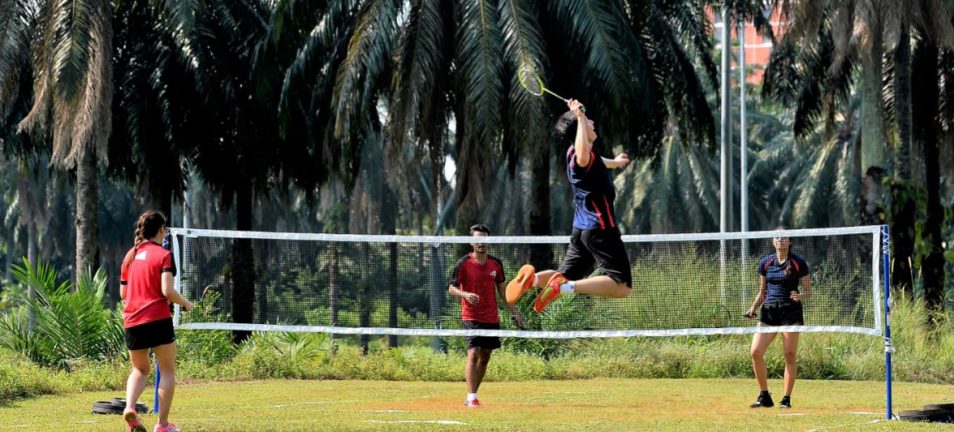
HOW TO PLAY
AirBadminton is fundamentally similar to indoor badminton. However, there are several differences between the two games that affect players’ strategies, gameplay and techniques.
The aim of the game is to score points by:
- landing the AirShuttle in your opponent’s court;
- forcing your opponent to hit the AirShuttle out of the playing area;
- forcing your opponent to hit the AirShuttle into the net;
- striking your opponent’s body with the AirShuttle.
AirBadminton is designed to be played on hard, grass and sand surfaces in parks, gardens, streets, playgrounds and beaches around the world.
It is important that all playing surfaces are levelled and uniform as possible, free of rocks, holes and anything else which can represent risk to players.
Synthetic flooring may also be used as an alternative to concrete and asphalt.
AirBadminton can be played in Singles (with one player per side), Doubles (with two players per side) and Triples (with three players per side).
In Triples players are not allowed to hit two consecutive returns. The player must allow another member of the team to take the next return. This rule creates more movement and increases the strategic element of the game.
For more information about the new Triples format please click here.
For AirBadminton recreational activities the BWF recommended scoring system is the best of five games to eleven points. However, other systems may be used to suit local considerations.
Key considerations:
- If the score is tied at 10-all, the side which gains a two-point lead first will win the game.
- If the score becomes 12-all, the side scoring the 13th point shall win the game.
- If the score becomes 12-all, the side scoring the 13th point shall win the game
- Players shall change ends will only change ends on the fifth game when a side first scores 6 points.
- The winning side will serve first in the next game.
- Intervals should be up to 120 seconds between games; and up to 60 seconds during every game when the leading score reaches 6 points.
There is a 3m marker clearly visible on the side line. The player shall serve from anywhere behind this marker within the court, with both feet stationary. The server may direct the AirShuttle anywhere into the opposition’s playing area beyond the 2m line.
Unlike traditional badminton, there is no centre line that divides the court into equal left and right service courts.
The whole AirShuttle should be below net height at the point of impact. Subsequently, the flight of the AirShuttle is upwards from the server’s racket.

Singles involves directing the serve anywhere into the opponent’s playing area beyond the 2m line.

The shaded part shows the area of play for singles. An AirShuttle that lands outside this area means a point is won / lost.

Double and Triples involve directing the serve anywhere into a wider playing area of the opponent. Any player from the receiving side can return the serve.

After the serve, doubles or triples rallies are played on the whole playing area.


















